With the launch of Model 03 imminent, we sat down with our furniture designer, John O’Leary, to understand the design process behind the new collection. We ask what he was trying to achieve, where his inspiration came from and the challenges he faced.
Pour yourself a cuppa, it’s time to get lost in the detail.
Q: What are we trying to achieve with Model 03?
J: “We wanted to create a sofa that could be tailored to the environment our customers live in. Our previous Models offer a set number of seats, which can be limiting. The modular nature of Model 03 allows our customers to have control over how they populate their space.
Model 01 and 02’s designs pay homage to the mid-century modern style, offering a more upright, sitting position. With Model 03, we wanted to design a sofa with a deep seat. Depth exaggerates the lounge experience, which means you can sink into it and fully relax.”
Q: What inspired Model 03?
J: “The initial inspiration behind Model 03 was to create a low lounge seater with a relaxed, loungy vibe… almost bohemian. The more ruffles the better. From a design perspective, the original intention was for the sofa’s lines to be loose, which exaggerates the relaxed feel and comfiness of the sofa.
The flange edge detailing was then an important component to Model 03’s aesthetic. In comparison to the straight, clean and classic look of Model 02’s piping, the flange brings a totally different vibe, one of relaxation, due in part to its wavy look. We worked hard to get the flange detail correct, trialling wide, narrow, big, thin etc. In the end we went with a solution which gave the right balance between looseness and style.”
Q: How do you go about designing a new collection, what’s the process?
J: “When designing a new collection, we start by asking what we are trying to achieve. We then sketch out the idea before creating prototypes. For Model 03, we made a number of prototypes to get the form and function how we wanted . For example, we worked hard on the shape and softness and even on smaller details like the feet. We tried a number of styles, shapes and colours, and had to test the rubber to understand the optimum level of friction between the sofa and floor. There are many elements involved in designing a modular sofa to ensure it works for the customer, looks good and comes in a box.”

Image: selection of Model 03 concept sketches from John's notepad
Q: How long has it taken to design 03, from concept through to launch?
J: “The whole process has taken eight months. To put this into context, Model 01 took four to five months.”
Q: From a design POV, what areas do you need to get right before launching with a new collection?
J: “Aside from packaging, there are three areas we perfect when designing the Model 03:
1) Frame
The frame acts as the skeleton or foundation of a sofa - arguably, it’s the most important component to get right. That’s why it took us three or four attempts before we were happy with it.
The frame’s build and shape was a challenge as the modularity dictated the design. For example, the corner module can be used on the left and right, so to make that work, the seat had to be square. Designing a normal three seater is easy because the frame is fixed. But with a modular, customers can essentially buy an infinite number of modules, so we had to ensure the proportions were exactly right for each one.
As in our previous Models, the frame is built from a combination of wood; solid beech for strength and birch plywood and poplar for the non-load bearing areas.
2) Bodywork
Bodywork is what we put inside the frame to make the sofa comfy. Initially, we trialled pocket springs and many different types of cushioning, but decided on high quality foam which is made in the UK. The foam is hugely resilient, has excellent bounce back qualities (when sitting on the foam it sinks, but after standing up, the cushion returns to its original shape), is long-lasting and durable.
Around the edge of the frame, we also use a dense foam and wrap both foams in a soft fibre to help bring the bodywork elements together. The fibre creates a feeling of initial softness before sinking into the foam.
3) Fabric
Uniformity is the key to success when fixing fabrics to sofas. For the first time during the design process at Swyft, we hired a full-time prototyper, who spent three months making fabric templates. Typically, we would spend one week making templates, but due to the complicated modular components it took much longer.
We worked hard on understanding how tight we had to pull the fabric and how this would affect the modules’ shape. A lot of work went into the shape and ensuring the dome was centred on the seat and arms. We had to also make sure the fabric was loose enough to feel comfortable, but tight enough to provide a clean look and feel once the modules are configured together..”

Image: Fabric, flange and foam testing on initial prototypes
Q: How has the Covid-19 pandemic affected production, if at all?
J: “Yes, it did. The lockdown in the UK and Portugal resulted in factory closures and trouble travelling. I had to manage everything from the UK, which is challenging when I need to sign-off prototypes etc. In the run up to product launch I would usually be in Portugal every few days, but I was only able to visit once throughout the pandemic.”
John O’Leary has been nominated for the Designer of the Year Award at IDI (Institute of Design Ireland) for his work on Model 01.
Read our interview with co-founder Keiran on the design process for the armchair.
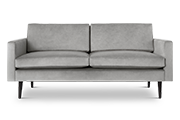
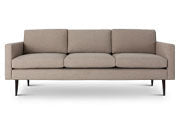 Model 01
Model 01
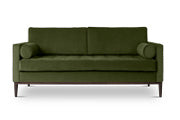 Model 02
Model 02
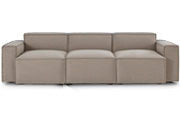 Model 03
Model 03
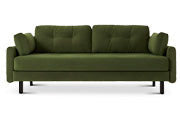 Model 04
Model 04
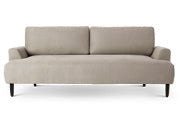 Model 05
Model 05
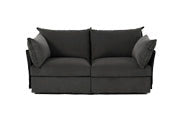 Model 06
Model 06
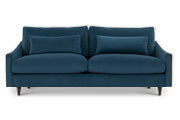 Model 07
Model 07
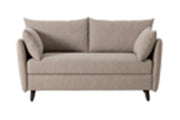 Model 08
Model 08
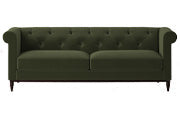 Model 09
Model 09
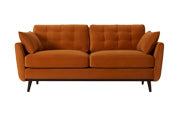 Model 10
Model 10
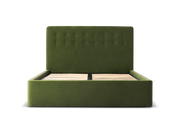 Bed 01
Bed 01
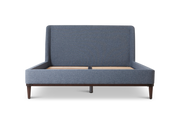 Bed 02
Bed 02
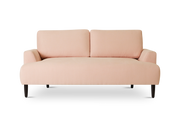
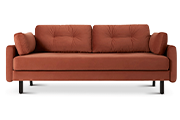
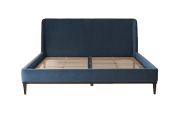
 Single
Single
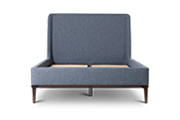 Double
Double
 King
King
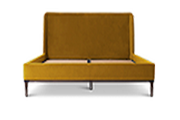 Super King
Super King
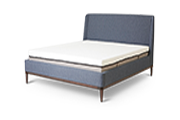 Mattresses
Mattresses
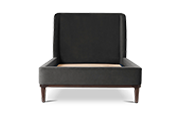 All Beds
All Beds
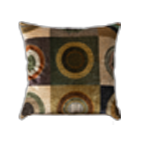
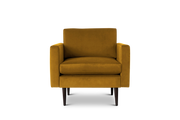
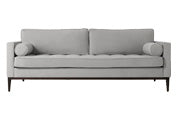
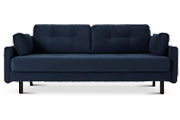




Want more? Discover interior inspiration and exclusive updates
Sign up to our weekly newsletter for more like this.